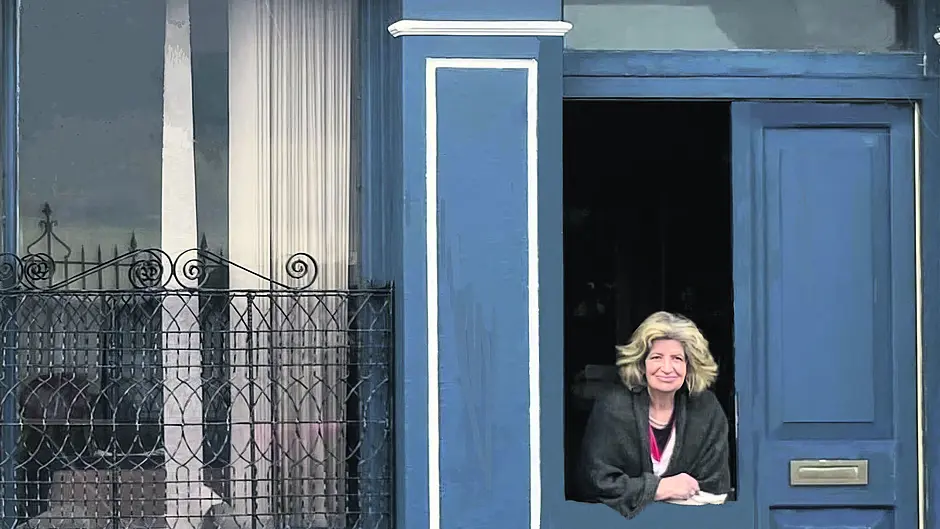‘A child comes into the world waiting to hear their first story,’ according to Terri Ryan, a professional storyteller, author and teacher, who recently facilitated 14 workshops at seven libraries for Cork County Council.
BY MARY MCCARTHY
Her non-fiction book The Bullies Predatory Footprint won four international awards.
Terri was the Seanchaí at Doneraile Art of the Heart Festival in June and at the Wild Comeragh Mountain Festival in Waterford just last week.
‘Stories are the single most powerful way of communicating,’ she said. ‘We have told stories to our children at bedtime to calm them and the stories would happily go to sleep, no matter whatever kind of day they had.
‘Neuroscience now tells us that when stories are told, we secrete the chemicals oxytocin and dopamine.
This is because of characters in the stories that are relatable, and emotions that are evoked. If the story is impacting on us emotionally, it goes into memory quicker, because of these two chemicals.
‘The words of the stories cause the listeners to create images from their experience and memory, which are triggered by their imagination. And these are creating pathways in our memory.
‘Storytelling is about the gathering of people, which is a very ancient custom. Listening and looking at the teller, together with the content transports us from where we are to where the place the story brings us, which combined makes it a very powerful way of communicating.’
Terri recalled that The Cape Clear International Storytelling Festival is the oldest one in Ireland. Storytelling festivals and the regular storytelling sessions are experiencing a huge revival and popularity all over Ireland.
This has a lot to do with a reaction to the electronic forms of communication that are colonising and taking up space in our brains rather than nurturing them in the ways that stories do.
‘The Irish are natural storytellers,’ she said. ‘The seanchaí is known internationally and we have a great tradition of storytelling from Eamon Kelly to Peig Sayers and Tomás O’Crohan.
In 19th century Ireland, this was a time of mythology of folklore.
We were a nation that invented Samhain, banshees and leprechauns.
A nation with incredible imagination, creativity and extraordinary writers. And with this the lore on the fairies and the otherworld, it fired the imaginations of the Irish people.’
She added: ‘In 1999, The New York Times featured a news event because of storyteller, Eddie Linehan.
‘ He stopped the work on a roundabout that had been granted EU money, which resulted in it being diverted. All because it would have disturbed (scath) a fairy bush.’
Terri concluded that storytelling is a gift, we continue giving to our children. And it is an artform in the gathering that is being revived.
In West Cork, some of the storytelling events that take place include Cork Stories at Oasis Arts Café, Ballydehob, Bere Island Storytelling Festival, Baltimore Story Fest, De Barra Spoken Word – Scioaíocht -De Barra’s Folk Club, Clonakilty, Creative Bandon Open Mic, Bandon, The Greyhound Bar, Dunmanway, Grapevine at Prims Bookstore, Kinsale, West Cork Collective, Kinsale, and The Cape Clear International Storytelling festival on the island in early September, and The Corner Bar, Skibbereen.








